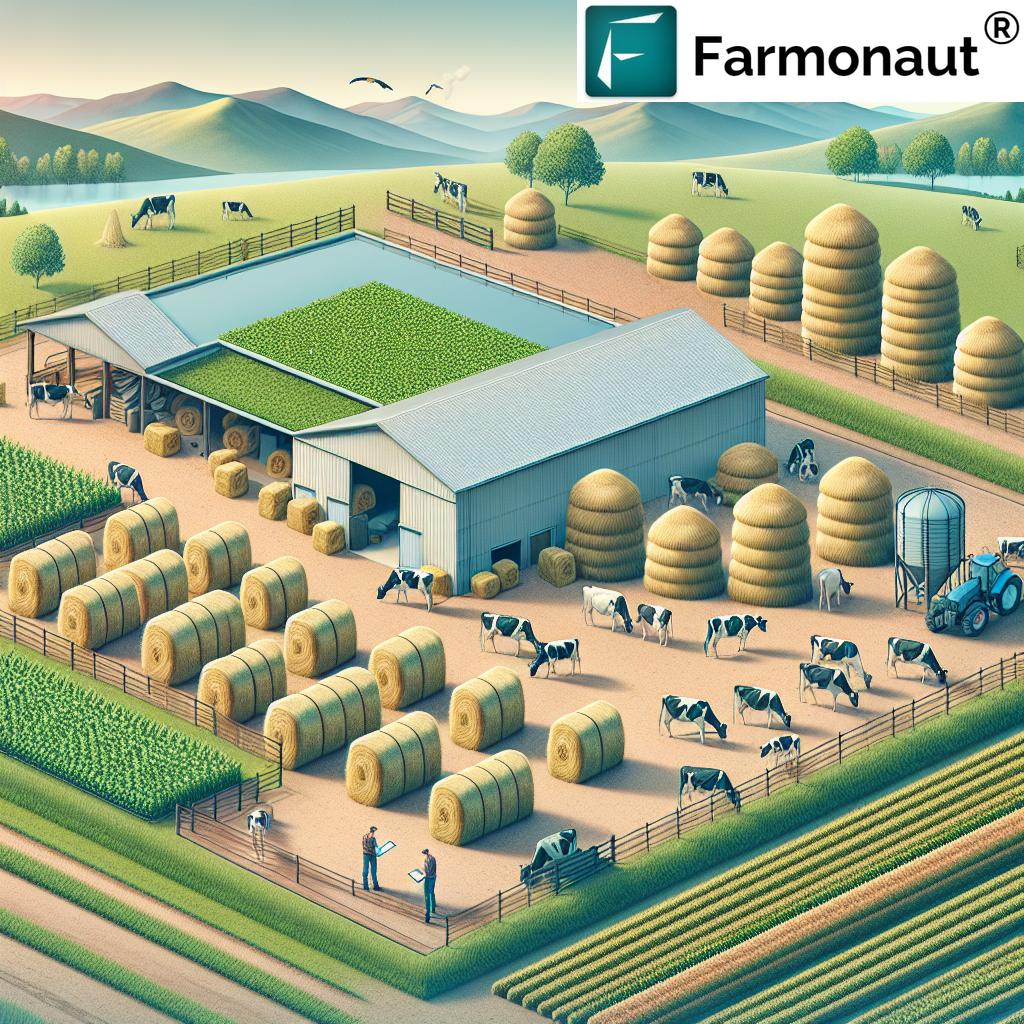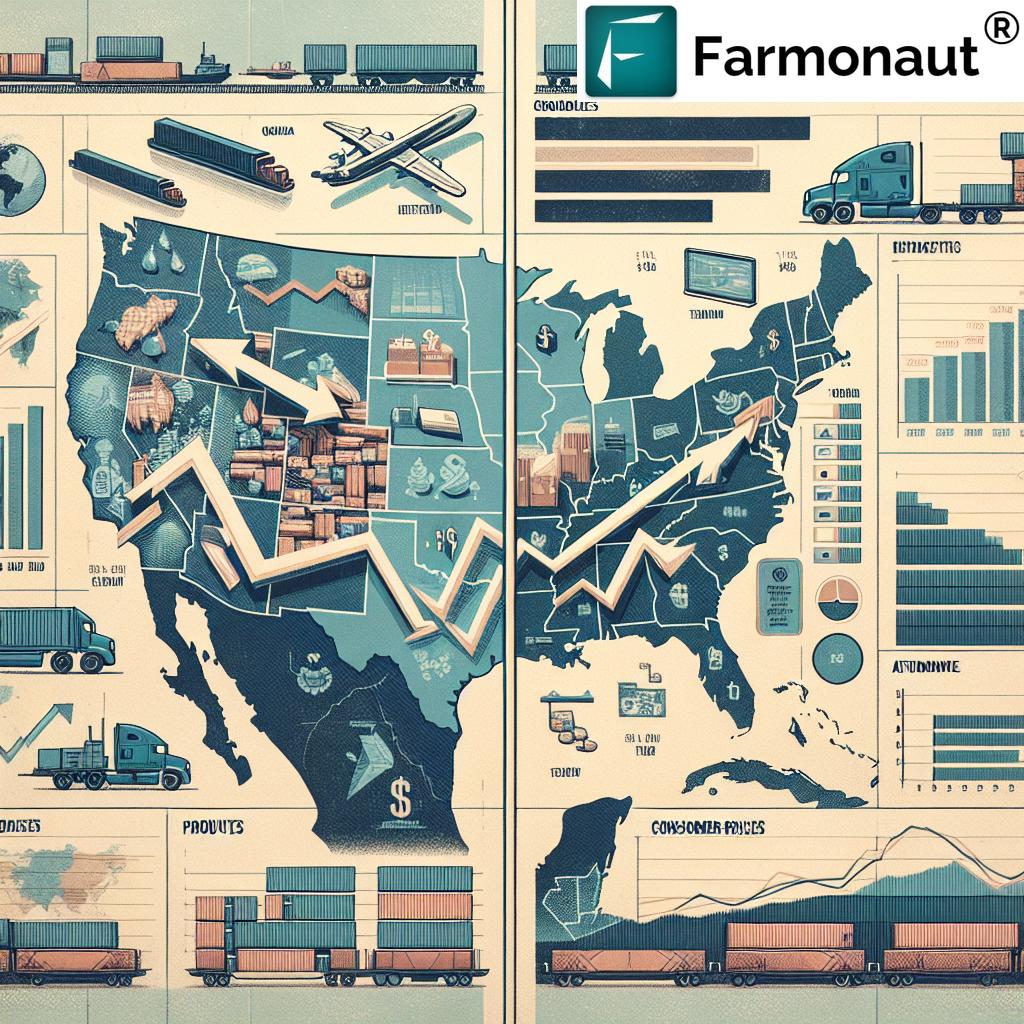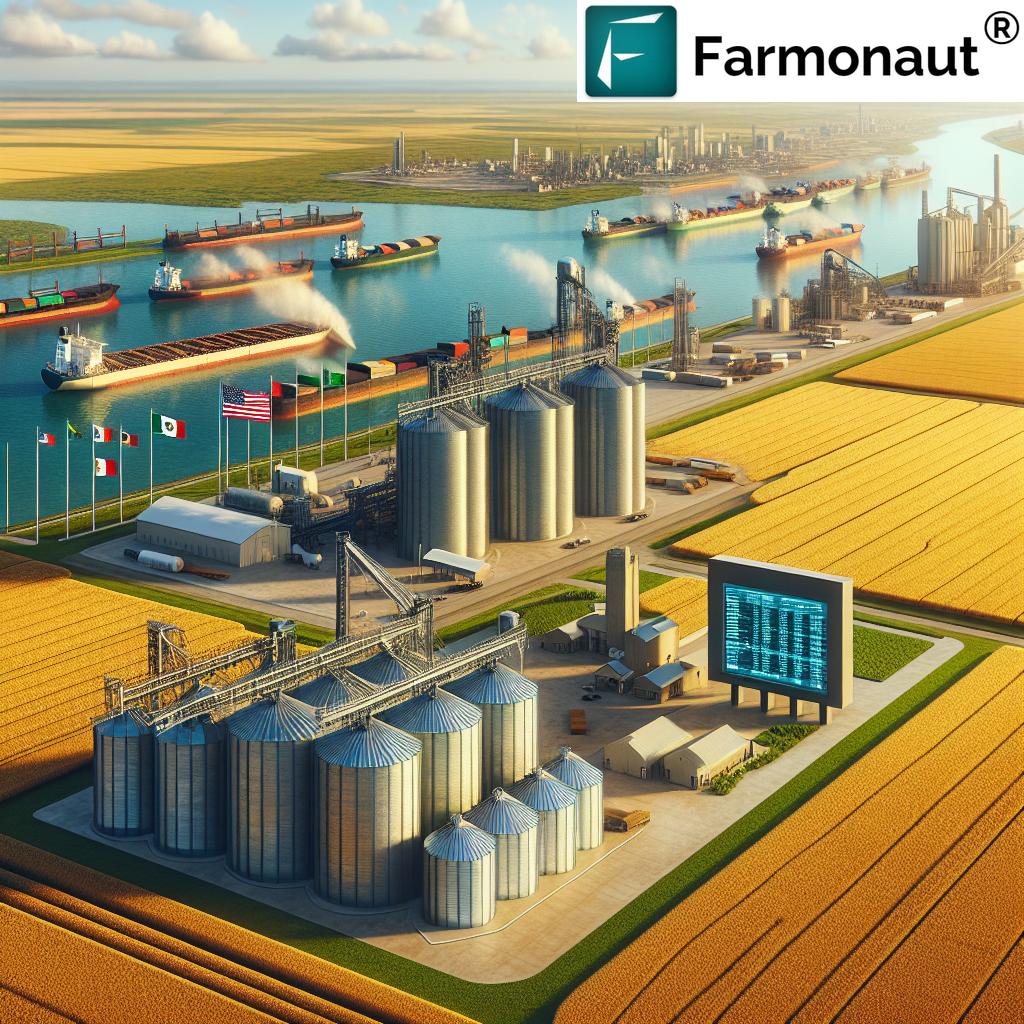Western U.S. Alfalfa Hay Market Forecast: Production Decline vs. Price Stability in 2023
“USDA reports a 5% decline in hay production across seven Western states, with California experiencing a 21% drop.”
In the ever-evolving landscape of agricultural markets, the Western U.S. alfalfa hay sector is facing a fascinating paradox in 2023. As we delve into the intricacies of this year’s market dynamics, we find ourselves navigating a complex interplay between production declines and price stability. This comprehensive analysis aims to shed light on the current state of the alfalfa hay market, exploring the factors influencing production, pricing, and the broader implications for farmers, livestock owners, and the agricultural industry at large.
Understanding the Alfalfa Hay Production Landscape
Alfalfa, often referred to as the “Queen of Forages,” plays a crucial role in the agricultural ecosystem of the Western United States. Its importance extends beyond mere hay production, serving as a vital food source for livestock, particularly in the dairy industry. However, the alfalfa hay production trends for 2023 present a challenging scenario that demands our attention.

According to the latest USDA alfalfa production report, we’re witnessing a significant shift in the Western U.S. hay market. The data reveals a 5% overall decline in hay production across seven key Western states. This reduction is not uniformly distributed, with California bearing the brunt of the decrease, experiencing a staggering 21% drop in alfalfa crop yield.
Factors Contributing to the Production Decline
Several factors have contributed to this notable decrease in alfalfa hay production:
- Water Scarcity: Persistent drought conditions in many Western states have led to reduced water availability for irrigation, directly impacting crop yields.
- Shifting Agricultural Priorities: Some farmers have opted to allocate their limited resources to higher-value crops, resulting in reduced acreage dedicated to alfalfa.
- Climate Variability: Extreme weather events, including unseasonable temperatures and erratic rainfall patterns, have adversely affected alfalfa growth and harvesting schedules.
- Regulatory Pressures: Evolving environmental regulations and water usage restrictions have posed challenges for alfalfa farmers, particularly in water-stressed regions.
The Paradox of Price Stability
Despite the notable decline in production, our Western US hay market analysis reveals an intriguing trend: price stability. This seemingly counterintuitive situation can be attributed to an oversupply of Fair and Good quality hay in the market. Let’s explore the factors contributing to this price stability:
- Quality Distribution: While overall production has decreased, the market is experiencing an abundance of Fair and Good quality hay, which is helping to meet demand and stabilize prices.
- Carry-over Stocks: Existing inventories from previous seasons are supplementing current production, helping to bridge the supply gap.
- Demand Adjustments: Livestock and dairy farmers are adapting their feeding strategies, potentially moderating demand for premium quality hay.
- Market Efficiency: Improved distribution networks and market information systems are enabling more efficient allocation of available hay supplies.
“Despite production decline, an oversupply of Fair and Good quality hay may stabilize prices in the short term.”
Regional Variations in the Western Alfalfa Market
The Western U.S. alfalfa hay market is far from monolithic, with significant variations across states. Let’s examine the regional differences in production and market dynamics:
| State | Estimated Production Change (%) | Estimated Price Trend | Quality Impact |
|---|---|---|---|
| California | -21% | Stable to Slight Increase | High-quality hay may see price premiums |
| Oregon | -4% | Stable | Balanced supply across quality grades |
| Washington | -3% | Stable | Good supply of Fair and Good quality hay |
| Idaho | -2% | Stable | Adequate irrigation maintaining quality |
| Nevada | -6% | Stable to Slight Increase | Water scarcity affecting quality distribution |
| Utah | -5% | Stable | Focus on efficient irrigation improving quality |
| Arizona | -7% | Stable to Slight Increase | Heat stress impacting quality, premium for top grades |
This table provides a snapshot of the Western states forage market, highlighting the variations in production declines and their potential impact on prices and quality. California’s significant 21% decrease stands out, potentially leading to localized price increases for high-quality hay. In contrast, states like Idaho and Washington are experiencing milder production declines, contributing to the overall market stability.
The Role of Irrigation and Crop Yield Management
In the face of production challenges, irrigation and crop yield management have emerged as critical factors in maintaining hay quality and mitigating the effects of reduced acreage. Farmers across the Western states are adopting innovative approaches to optimize their alfalfa crops:
- Precision Irrigation: Utilizing advanced technologies to maximize water efficiency and ensure optimal moisture levels for alfalfa growth.
- Soil Health Management: Implementing practices to enhance soil fertility and structure, promoting robust alfalfa root systems and improving drought resilience.
- Varietal Selection: Choosing alfalfa varieties better suited to local climate conditions and water availability.
- Harvest Timing Optimization: Carefully planning cutting schedules to balance yield and nutritional quality.
These strategies are crucial for farmers navigating the complexities of the current market conditions. By focusing on efficient resource utilization and quality enhancement, producers can potentially offset some of the impacts of reduced production volumes.
Impact on Livestock and Dairy Industries
The alfalfa hay production trends and Western US hay market analysis have significant implications for the livestock and dairy sectors. These industries heavily rely on alfalfa as a primary feed source, and the current market dynamics are prompting strategic adaptations:
- Feed Diversification: Livestock and dairy farmers are exploring alternative forage options to supplement their feed requirements.
- Quality-Based Purchasing: With an oversupply of Fair and Good quality hay, buyers are carefully balancing nutritional needs with cost considerations.
- Long-Term Contracting: Some operations are entering into longer-term supply agreements to secure stable hay supplies amidst production uncertainties.
- On-Farm Forage Production: There’s a growing trend towards increased on-farm forage production to reduce reliance on external hay supplies.
These adaptations are crucial for maintaining the health and productivity of livestock while managing feed costs in a changing market landscape.
Leveraging Technology for Improved Hay Production
In the face of production challenges and market uncertainties, technology is playing an increasingly vital role in optimizing alfalfa hay production. Advanced tools and platforms are empowering farmers to make data-driven decisions and improve their crop management strategies.
Farmonaut, a leading agricultural technology company, offers innovative solutions that can significantly benefit alfalfa hay producers. Their satellite-based farm management platform provides real-time insights into crop health, soil moisture levels, and other critical metrics. By leveraging these technologies, farmers can:
- Monitor crop health and identify potential issues early
- Optimize irrigation schedules based on precise soil moisture data
- Make informed decisions about fertilizer application and pest management
- Track and analyze crop performance over time
To explore how Farmonaut’s technology can enhance your alfalfa hay production, visit their web application or download their mobile apps:
Market Outlook and Future Considerations
As we look ahead, several factors will continue to shape the Western U.S. alfalfa hay market:
- Water Availability: Long-term water management strategies and potential policy changes will play a crucial role in future production capabilities.
- Climate Adaptation: The industry’s ability to adapt to changing climate patterns will be critical for maintaining stable production levels.
- Technological Adoption: Increased use of precision agriculture techniques and data-driven farming practices could help offset some production challenges.
- Market Diversification: Exploring new markets and uses for alfalfa products may help stabilize demand and pricing.
- Quality Premium: As production tightens, there may be an increasing premium for high-quality hay, potentially altering market dynamics.
Strategies for Stakeholders
Given the current market conditions and future outlook, we recommend the following strategies for various stakeholders in the alfalfa hay industry:
For Alfalfa Hay Producers:
- Invest in efficient irrigation systems and water management technologies
- Focus on quality optimization to potentially capture price premiums
- Explore crop diversification to mitigate risks associated with alfalfa production challenges
- Utilize advanced monitoring tools like Farmonaut to optimize crop management
For Livestock and Dairy Farmers:
- Develop flexible feeding strategies that can adapt to varying hay quality and availability
- Consider long-term supply contracts to ensure stable hay access
- Explore on-farm forage production capabilities where feasible
- Stay informed about market trends and adjust purchasing strategies accordingly
For Agricultural Policymakers:
- Develop policies that promote sustainable water use in agriculture
- Support research into drought-resistant alfalfa varieties
- Encourage the adoption of precision agriculture technologies
- Consider programs to support farmers transitioning to more water-efficient practices

Leveraging Technology for Market Intelligence
In today’s data-driven agricultural landscape, staying informed about market trends and production data is crucial. Farmonaut’s platform not only aids in crop management but also provides valuable insights for market analysis. Their API offers access to comprehensive satellite and weather data, enabling businesses and researchers to conduct in-depth market analyses and forecasts.
For those interested in integrating Farmonaut’s data into their own systems or applications, detailed information is available in their API Developer Docs.
Conclusion: Navigating the Changing Landscape
The Western U.S. alfalfa hay market in 2023 presents a complex scenario of production declines juxtaposed against price stability. This unique situation underscores the resilience and adaptability of the agricultural sector. As we navigate these challenges, the importance of efficient resource management, technological adoption, and market awareness becomes increasingly evident.
While the 5% overall decline in hay production across Western states, and California’s significant 21% drop, pose challenges, the market’s ability to maintain price stability through existing supplies of Fair and Good quality hay demonstrates its robustness. However, this stability should not breed complacency. The industry must remain vigilant and proactive in addressing long-term sustainability issues, particularly concerning water management and climate adaptation.
For individual farmers, the key to success lies in embracing precision agriculture techniques, optimizing irrigation practices, and leveraging data-driven insights to enhance crop yields and quality. Tools like Farmonaut’s satellite-based monitoring system can play a crucial role in this optimization process, providing real-time data and actionable insights.
As we look to the future, the Western U.S. alfalfa hay market will likely continue to evolve. The interplay between production challenges, technological advancements, and changing market demands will shape the industry’s trajectory. By staying informed, adaptable, and innovative, stakeholders across the agricultural spectrum can navigate these changes successfully, ensuring the continued viability and sustainability of alfalfa hay production in the Western United States.
FAQs
- Q: What is causing the decline in alfalfa hay production in the Western U.S.?
A: The decline is primarily due to water scarcity, shifting agricultural priorities, climate variability, and regulatory pressures affecting water usage. - Q: Why are hay prices stable despite the production decline?
A: Price stability is attributed to an oversupply of Fair and Good quality hay, carry-over stocks from previous seasons, and adjustments in demand from livestock and dairy farmers. - Q: How is California’s alfalfa production affected compared to other Western states?
A: California is experiencing the most significant decline, with a 21% drop in production, compared to the overall 5% decline across seven Western states. - Q: What strategies can alfalfa farmers adopt to mitigate production challenges?
A: Farmers can focus on precision irrigation, soil health management, varietal selection, and harvest timing optimization to improve yields and quality. - Q: How are livestock and dairy farmers adapting to changes in the hay market?
A: They are diversifying feed sources, adjusting purchasing strategies based on hay quality, entering long-term supply contracts, and increasing on-farm forage production. - Q: What role does technology play in modern alfalfa hay production?
A: Technology, such as Farmonaut’s satellite-based monitoring, helps farmers optimize irrigation, track crop health, and make data-driven decisions to improve yields and quality. - Q: Will the current market conditions likely lead to higher hay prices in the future?
A: While prices are currently stable, future increases are possible, especially for high-quality hay, as production challenges persist and market dynamics evolve. - Q: How can policymakers support sustainable alfalfa production in the Western U.S.?
A: Policymakers can develop sustainable water use policies, support research into drought-resistant varieties, and encourage the adoption of precision agriculture technologies.















